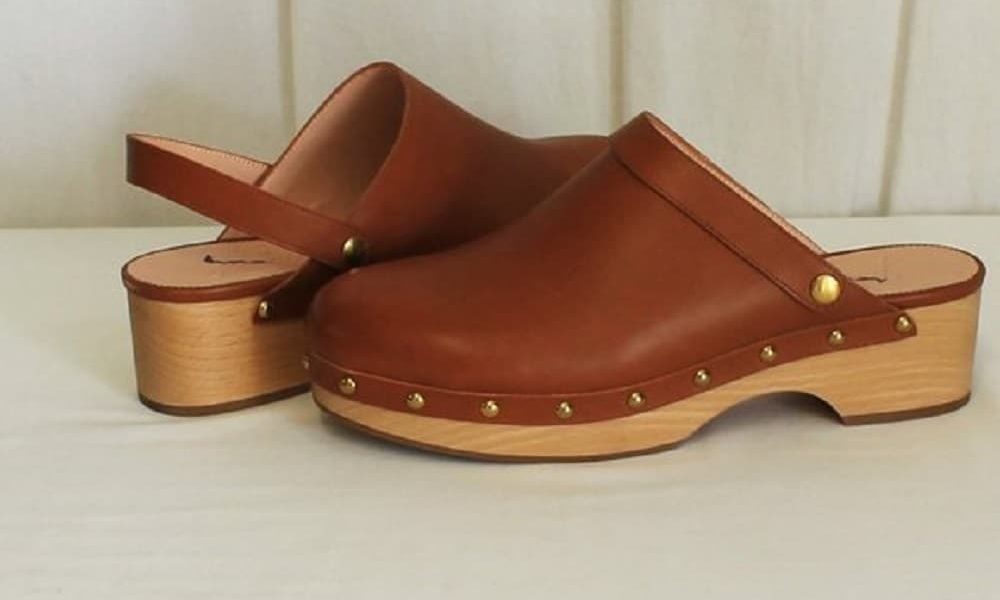In today’s fast-paced world, where trends come and go, sustainability and conscious consumption are no longer just buzzwords but are actively shaping how we live. From fashion to everyday household items, the idea of repurposing and upcycling has gained massive popularity. One simple yet creative way to contribute to this movement is by turning your old jeans into a stylish DIY tote bag or purse. This not only reduces waste but also provides you with a unique, durable accessory that reflects your personality.
Why Repurpose Old Jeans?
Before diving into the step-by-step process of transforming your worn-out jeans into a tote bag or purse, let’s take a moment to understand why repurposing is such a valuable activity—especially when it comes to denim. The benefits of recycling old materials go far beyond saving a few bucks; they touch on environmental consciousness, cost-efficiency, and the potential for endless creativity.
Environmental Benefits of Recycling Denim
Denim, despite its iconic role in global fashion, is one of the most resource-intensive fabrics to produce. It takes about 1,800 gallons of water to grow enough cotton to produce just one pair of jeans. Factor in the chemicals used in dyeing and treating denim, and it becomes clear that producing jeans leaves a significant ecological footprint.
By repurposing your old jeans into something new, like a tote bag or purse, you’re not only reducing waste but also making the most of the resources that went into creating those jeans in the first place. Upcycling denim helps keep textiles out of landfills, where it can take years to decompose. Additionally, the act of repurposing supports a circular economy, where items are reused or remade into something valuable rather than being discarded after their first life cycle.
Cost-Effectiveness of Creating Something New from Old Materials
The fashion industry, notorious for its rapid trends, often encourages consumers to buy new clothes to stay on top of the latest styles. This cycle can be expensive, especially when you’re buying quality items like handbags or totes. But with a little creativity and effort, your old jeans can be transformed into something stylish and functional—without the hefty price tag.
Think of it this way: for the cost of a new bag, you can buy materials like thread, needles, and a few embellishments, while recycling an item you already own. Plus, homemade bags often last longer since you can control the quality of the construction, ensuring it meets your personal durability standards. You can also personalize it with features that suit your lifestyle, such as adding an extra pocket or choosing straps that are comfortable for everyday wear.
Unique, Stylish, and Durable Products from Upcycled Jeans
One of the best aspects of turning old jeans into a tote bag or purse is that no two pieces will ever be the same. Each item is a one-of-a-kind creation because every pair of jeans carries its own story. Whether it’s a well-worn pair that you’ve had for years, with subtle fades and frays that give the fabric character, or a stylish pair with unique stitching or embellishments, your finished product will be completely personalized.
Denim is also incredibly durable. Jeans are made to withstand years of wear and tear, which makes them ideal for repurposing into everyday accessories like bags. By leveraging the sturdy qualities of denim, you’ll create a bag that is not only fashionable but built to last. Whether you’re using it as a grocery tote, an everyday purse, or even a laptop bag, your upcycled denim creation will stand the test of time.
Materials Needed for Your DIY Tote Bag or Purse
Once you’ve decided to embark on this DIY journey, it’s essential to gather the right materials. The beauty of this project is its simplicity—you likely already have most of what you need around the house.
A List of Tools and Materials Required
- Old Jeans: The most critical material for this project. Choose a pair that is worn but still has enough strong fabric left to create your tote bag or purse. If you want more texture or visual interest, pick jeans with unique details like patches, rips, or embroidery.
- Fabric Scissors: A sharp pair of fabric scissors will make cutting through denim much easier and more precise.
- Thread and Needle: For stitching the bag together. If you have a sewing machine, even better—it will make the process quicker. Be sure to use strong thread since denim can be thick and difficult to stitch by hand.
- Lining Fabric (Optional): Adding a fabric lining can give your DIY bag a more professional finish and add extra durability. Choose a fabric that complements the color and texture of your denim.
- Pins or Fabric Clips: To hold the fabric in place while you sew.
- Measuring Tape or Ruler: To measure and cut fabric accurately.
- Iron: Pressing the seams as you sew will give your bag a polished look.
Optional Decorative Items
If you’re feeling creative, this project offers plenty of opportunities for customization. You can add decorative elements like:
- Buttons: For added style and closure options.
- Patches or Embroidery: Give your bag a boho or vintage vibe by incorporating patches or embroidery. If your jeans already have unique patches, use those as focal points in your design.
- Fabric Paint: Personalize your bag even further by adding your own artwork or quotes using fabric paint.
- Zippers: You can add a zipper for security, especially if you’re making a purse rather than a tote bag.
With these materials on hand, you’re ready to start creating your unique, eco-friendly tote bag or purse. But before diving into the crafting process, it’s worth considering a few design choices to ensure your final product is exactly what you need.
Wrapping Up
Repurposing old jeans into a tote bag or purse is a creative, eco-friendly project that offers practical benefits. Whether you’re passionate about sustainability or just love the idea of crafting something unique from old clothing, this DIY project is a rewarding way to breathe new life into your wardrobe.
In the sections that follow, we’ll take you step by step through the process of transforming your old jeans into a tote bag or purse, with tips on customization, design, and making the most of every piece of fabric. Stay tuned for the detailed guide, and get ready to create a beautiful, functional accessory that reflects your style and values.
Step-by-Step Guide to Making a Tote Bag or Purse from Old Jeans
Ready to transform your old jeans into a chic tote bag or purse? This step-by-step guide will walk you through the process, making it easy even for beginners. Grab your materials, and let’s get started on creating a one-of-a-kind accessory that’s both stylish and sustainable.
Step 1: Prepare the Jeans
Selecting the Right Jeans
- Condition: Choose jeans that are worn but still have sturdy areas. Avoid overly distressed denim that might not hold up well.
- Size and Style: Larger jeans provide more fabric to work with, offering more design possibilities. Jeans with unique features like pockets, embroidery, or distinctive stitching can add character to your bag.
Cleaning and Ironing
- Wash the Jeans: Ensure they’re clean to work with a fresh canvas.
- Iron: Press the jeans to remove wrinkles, making cutting and measuring more accurate.
Step 2: Cutting and Shaping the Bag
Deciding on the Bag Style
- Tote Bag: Typically larger, suitable for shopping or carrying books.
- Purse: Smaller, ideal for daily essentials like your phone, wallet, and keys.
Cutting the Denim
- Mark the Cut Lines: Turn the jeans inside out. Use chalk or a fabric marker to outline where you’ll cut.
- For a Tote Bag: Cut straight across the legs, just below the crotch. This utilizes the top part of the jeans, including the back pockets.
- For a Purse: You can use one pant leg. Cut the leg to your desired purse length.
- Cut the Fabric: Use sharp fabric scissors to make clean cuts along your marked lines.
Creating the Bag Body
- Sew the Bottom Edge: With the fabric still inside out, pin the bottom edges together.
- Stitch: Use a strong thread and sew along the bottom edge. A sewing machine is ideal for durability, but hand-stitching with a backstitch will work if you’re careful.
Step 3: Sewing the Tote Bag/Purse
Reinforcing Seams
- Double Stitching: For added strength, especially if you plan to carry heavy items.
- Finishing Edges: Use a zigzag stitch or serge the edges to prevent fraying.
Creating the Handles or Straps
- Measure and Cut: Decide on the length of your handles. For shoulder straps, 24-30 inches is standard; for hand-held handles, 12-16 inches works well.
- Option 1: Use leftover denim from the legs. Cut two long strips, about 4 inches wide.
- Option 2: Use alternative materials like ribbon, leather strips, or rope for a contrasting look.
- Prepare the Handles:
- Denim Straps: Fold each strip in half lengthwise, right sides together. Sew along the long edge, then turn right side out. Press flat with an iron.
- Attach the Handles:
- Placement: Pin the handles to the inside of the bag’s opening, ensuring they’re evenly spaced.
- Secure: Sew the handles onto the bag, stitching in a square or X pattern for extra strength.
Step 4: Adding a Lining (Optional)
Benefits of a Lining
- Durability: Protects the inside of your bag and can support heavier items.
- Aesthetics: Adds a professional finish and allows for a pop of color or pattern.
How to Add a Lining
- Measure the Interior: With the bag inside out, measure the width and height.
- Cut the Lining Fabric: Cut two pieces of your chosen fabric to these dimensions, adding an extra half-inch for seam allowances.
- Sew the Lining:
- Stitch Sides and Bottom: Place the two pieces right sides together and sew along the sides and bottom.
- Insert the Lining: Turn your denim bag right side out and keep the lining inside out. Insert the lining into the bag so that the right sides of both fabrics are facing each other.
- Attach the Lining:
- Align Edges: Match the top edges of the lining and the bag.
- Pin and Sew: Pin around the top edge and sew, leaving a small gap.
- Turn and Finish: Pull the lining through the gap to turn the bag right side out. Tuck the lining into the bag and stitch the gap closed.
Step 5: Customizing Your Bag
Adding Pockets
- Internal Pockets: Use leftover fabric to create pockets inside the lining for keys, phones, or pens.
- External Pockets: Utilize the back pockets from the jeans on the exterior for added functionality.
Embellishments
- Buttons and Beads: Sew on decorative buttons or beads for a personalized touch.
- Patches and Appliqués: Add fabric patches or iron-on designs to express your style.
- Embroidery: Stitch patterns, initials, or motifs directly onto the denim for a bespoke look.
Closures
- Zippers: Install a zipper at the top opening for security.
- Magnetic Snaps or Velcro: Easier alternatives for keeping your bag closed.
Finishing Touches
- Edge Topstitching: Sew around the top edge of the bag for a polished finish.
- Frayed Edges: For a rugged look, leave some edges raw and fray them slightly by pulling out horizontal threads.
Tips for Success
- Take Your Time: Rushing can lead to mistakes. Careful measuring and cutting make a big difference.
- Use the Right Needle: If using a sewing machine, ensure you have a needle designed for heavy fabrics like denim.
- Practice Stitches: If you’re new to sewing, practice your stitches on scrap fabric first.
By following these steps, you’ve turned a pair of old jeans into a functional and fashionable tote bag or purse. Not only have you created something unique and useful, but you’ve also contributed to a more sustainable world by giving new life to old materials. Enjoy your new accessory, and don’t hesitate to experiment with different designs and embellishments to make it truly your own.
Upcycling Tips and Tricks
As you dive into this upcycling project, there are a few tips and tricks that can make the process smoother and more enjoyable. Repurposing old jeans into a tote bag or purse is not only about following steps but also about infusing your creativity and finding innovative ways to use the materials at hand.
Choosing the Right Kind of Old Jeans
Not all jeans are created equal, and some may be better suited for upcycling than others. Here’s how to choose the best pair for your project:
- Durability: Look for jeans with thick, sturdy denim. Jeans that are too worn or ripped may not hold up well when transformed into a bag. However, a little distress can add character.
- Color: Consider the wash and color of the denim. Lighter washes may give your bag a casual, beachy vibe, while darker denim tends to look more polished and versatile.
- Details: Pay attention to the features of the jeans, such as back pockets, belt loops, and unique stitching. These details can be incorporated into your design, giving your bag a distinct look.
Using Scraps and Leftover Fabric for Other DIY Projects
After you’ve cut and sewn your tote bag or purse, you’ll likely be left with fabric scraps. Instead of throwing them away, consider using them for other creative DIY projects. Here are a few ideas:
- Denim Keychains: Sew small pieces of denim into keychains. You can add embellishments like beads or fabric paint for a personal touch.
- Patches: Use leftover fabric to create patches for other clothing items. A frayed denim patch can add a cool, edgy look to jackets, pants, or even hats.
- Small Accessories: If you have larger pieces of fabric left over, consider making small accessories like coin purses, wallets, or even a matching makeup bag to go with your tote.
By repurposing every last bit of your old jeans, you maximize their value and contribute even further to reducing waste.
Common Mistakes to Avoid
While transforming jeans into a tote bag or purse is a fun and rewarding project, there are a few common mistakes that beginners might encounter. Being aware of these can help you avoid frustration and ensure a successful outcome.
- Not Measuring Accurately: One of the most common mistakes is cutting fabric without precise measurements. Always take the time to measure carefully and mark your fabric with chalk or a fabric pen to ensure clean, even cuts.
- Using the Wrong Needle: Denim is a thick, tough fabric, and regular sewing needles can easily break. Make sure you’re using a heavy-duty needle specifically designed for denim.
- Rushing the Process: Upcycling projects are creative endeavors that require time and patience. Don’t rush through the sewing process, especially if you’re hand-stitching. Double-check your seams, reinforce areas that will endure more strain (like handles), and press the fabric as you go for a clean finish.
By following these tips and avoiding common pitfalls, you’ll create a high-quality, durable tote bag or purse that you’ll be proud to show off.
DIY Tote Bag vs. DIY Purse: What’s the Difference?
When upcycling old jeans, the beauty of this project lies in its versatility. Depending on your personal style and needs, you can decide to make either a tote bag or a purse. But what exactly is the difference, and how do you choose between the two?
Tote Bag: Practical and Versatile
A tote bag is typically larger, making it ideal for daily errands, shopping, and even work. Its size allows for carrying books, groceries, and other essentials, making it a go-to bag for anyone on the go. Here are some key features of a DIY denim tote bag:
- Size: Usually larger than a purse, with enough space for multiple items.
- Shape: A rectangular or square base with a roomy interior. Some tote bags may have an open top or a simple closure.
- Handles: Longer straps, often designed to be carried on the shoulder or slung over the arm.
- Functionality: Totes are versatile and can be used for anything from grocery shopping to carrying beach towels.
Why Make a Denim Tote Bag?
- Durability: Denim is naturally sturdy, making it perfect for a tote that will carry heavier items.
- Style: A denim tote is casual yet stylish, suitable for everyday use.
- Customization: The larger surface area gives you more room for creativity. Add pockets, zippers, or decorative patches to make it uniquely yours.
Purse: Compact and Stylish
If you’re looking for something smaller and more compact, a purse might be the better option. Perfect for carrying your essentials—like a wallet, keys, and phone—a DIY denim purse is a stylish and functional accessory. Here’s what sets a purse apart:
- Size: Smaller than a tote, a purse is designed to hold only the essentials.
- Shape: Purses often have a more structured or curved design. They can be rectangular, circular, or even square, depending on the style.
- Handles: Shorter straps, typically meant to be hand-held or worn on the wrist. Some purses may also come with a longer crossbody strap.
- Functionality: Ideal for occasions where you only need to carry a few small items, such as going out for the evening or running quick errands.
Why Make a Denim Purse?
- Compact: It’s smaller and easier to carry, making it perfect for when you don’t need a lot of items.
- Style: A denim purse is chic and can easily be dressed up or down.
- Custom Design: With a smaller canvas, you can focus on intricate details like embroidery, zippers, or button closures to elevate the look.
How to Choose?
The decision between making a tote bag or a purse comes down to personal preference and how you plan to use it. If you’re looking for a bag that can carry a variety of items and has a casual, everyday feel, a tote bag is a great option. On the other hand, if you prefer something smaller and more refined for nights out or quick trips, a purse might be the better choice. The best part? You can always make both!
Popular Design Ideas for Denim Tote Bags and Purses
Now that you have the basic skills to create your DIY denim tote bag or purse, it’s time to explore some design ideas that will make your bag stand out. Denim is a versatile fabric that pairs well with various styles, and here are a few trends you can incorporate into your project:
Boho-Chic Denim Bags
Boho style is all about free-spirited, eclectic designs that mix textures, colors, and patterns. To achieve this look with your denim bag:
- Fringe: Add denim fringe along the edges of your tote or purse for a laid-back, festival-ready vibe.
- Patchwork: Combine different pieces of denim or mix in other fabrics like suede or cotton to create a patchwork design.
- Embroidery: Incorporate floral or geometric embroidery patterns to give your bag a handmade, artisanal feel.
Minimalist Denim Bags
If you prefer a more understated, minimalist look, a sleek and simple denim bag might be perfect for you. Keep the design clean with:
- Simple Lines: Focus on clean lines and structured shapes. A boxy, rectangular tote with minimal embellishments can look incredibly polished.
- Monochrome: Stick to one shade of denim, and avoid adding too many decorative elements. Instead, let the quality of the stitching and structure stand out.
- Leather Accents: Pair your denim with leather straps or a leather pocket to add a touch of elegance.
Vintage-Inspired Denim Bags
Denim has a rich history, and you can tap into a vintage aesthetic by incorporating elements from the past:
- Classic Pockets: Use the back pockets of the jeans as exterior pockets on your bag for a retro, utilitarian feel.
- Distressed Details: Leave raw edges and frayed hems for a worn-in, vintage look.
- Buttons and Badges: Add metal buttons, pins, or vintage patches to give your bag a nostalgic touch.
By experimenting with these design ideas, you can create a denim tote bag or purse that reflects your style and stands out as a truly unique accessory.
Sustainability and Fashion: The Future of Upcycled Denim
The fashion industry is notorious for its significant environmental impact. From fast fashion to textile waste, it has become increasingly clear that our consumption habits need to shift toward more sustainable practices. Upcycling is a powerful way to tackle this issue, and repurposing old denim into functional items like tote bags or purses is just one of many ways we can contribute to a greener future.
How DIY Projects Contribute to the Sustainable Fashion Movement
When we talk about sustainability in fashion, the focus is often on buying ethically produced clothing, but there’s an even more accessible approach: upcycling. By transforming old clothing, such as jeans, into new items, you’re actively participating in the sustainable fashion movement. Here’s how upcycling through DIY projects like making a denim tote bag or purse can make a difference:
- Reducing Textile Waste: One of the biggest benefits of upcycling is that it helps keep textiles out of landfills. The average person throws away around 80 pounds of clothing each year, much of which ends up as waste. By giving your old jeans a new life as a bag, you’re reducing this waste.
- Minimizing Resource Consumption: The production of new clothing requires significant resources, including water, energy, and raw materials. Upcycling eliminates the need for new materials, as you’re using what you already have. This reduces the demand for the resources that would otherwise go into making new items.
- Promoting Individual Creativity: DIY projects foster a sense of creativity and innovation. Instead of buying mass-produced items, you’re making something unique that aligns with your personal style. This shift in mindset encourages people to think outside the box and appreciate the value of handmade, repurposed goods.
Benefits of Upcycling Over Fast Fashion
Fast fashion has made it easy to buy cheap, trendy clothing, but this convenience comes at a high environmental and ethical cost. The rapid production cycles, low wages for workers, and disposable nature of fast fashion all contribute to its harmful effects. Upcycling offers a more sustainable alternative by focusing on quality, creativity, and longevity. Here’s how upcycling stands apart:
- Longer Lifespan of Products: Upcycled items, especially those made from durable materials like denim, tend to last longer than many fast fashion products. When you make something yourself, you have control over its quality and can ensure it’s built to last.
- Supporting a Circular Economy: Fast fashion operates on a linear model—produce, consume, and dispose. Upcycling, on the other hand, promotes a circular economy, where materials are continuously repurposed rather than discarded after one use.
- Lower Carbon Footprint: The fashion industry is responsible for approximately 10% of global carbon emissions. By upcycling, you help reduce the industry’s carbon footprint, as you’re reusing existing materials rather than contributing to the production of new ones.
The Growing Trend of Repurposed Fashion in the Industry
The concept of repurposing fashion is no longer limited to DIY enthusiasts; it’s gaining traction in the fashion industry itself. Many designers and brands are beginning to incorporate upcycled materials into their collections, creating innovative, sustainable fashion lines. Big-name designers have even debuted upcycled pieces on runways, bringing more attention to the movement. Here’s how the trend is evolving:
- High-Fashion Meets Upcycling: Several high-end fashion houses have introduced upcycled collections, using fabric scraps and old garments to create new, luxurious pieces. This approach challenges the notion that upcycled items are low-quality or purely functional.
- Emergence of Upcycled Brands: Many independent brands are now focusing exclusively on upcycled fashion. These companies are built around the concept of sustainability, offering consumers the opportunity to buy repurposed items that are both stylish and eco-friendly.
- Consumer Demand: As awareness of the environmental impact of fashion grows, more consumers are seeking out upcycled products. People are becoming more conscientious about where their clothes come from and are increasingly interested in unique, one-of-a-kind pieces that don’t contribute to waste.
FAQs About Turning Old Jeans into DIY Bags
When embarking on any DIY project, especially one as fun and practical as turning old jeans into a tote bag or purse, there are bound to be questions. Below, we’ve compiled some frequently asked questions to help you along the way.
- What types of jeans work best for upcycling?
Old jeans of almost any kind can work for upcycling, but the sturdier the denim, the better. Jeans that are too thin or overly worn may not hold up well as a bag. However, slight wear and tear can add character to your final product, giving it a vintage, distressed look. Darker denim tends to look more polished, while lighter denim offers a casual, laid-back vibe. Stretchy jeans with a lot of elastane may be more difficult to work with, so it’s best to stick to 100% cotton denim for structural projects like bags.
- How durable are these DIY denim bags?
Denim is one of the most durable fabrics out there, which is why it’s so commonly used in workwear and heavy-duty clothing. When repurposed into a tote bag or purse, it retains that same durability. If you reinforce the seams and use a heavy-duty thread, your upcycled denim bag should be able to handle daily wear and tear. Adding a lining and double stitching areas like the handles will also help increase the bag’s strength.
- Can I use other materials besides denim?
Yes! While denim is a popular material for upcycling bags due to its strength and versatility, you can also mix in other fabrics. For example, you could use leftover canvas, old curtains, or even scrap leather to create straps or panels for your tote or purse. Mixing fabrics not only makes the bag more interesting but also gives you a chance to use up other materials you may have lying around.
- How long does it take to make a tote bag or purse from old jeans?
The time it takes to complete this project depends on your sewing skills and the complexity of your design. A basic tote bag without lining or embellishments might take around 2-3 hours for beginners. If you’re adding a lining, decorative elements, or hand-stitching, the project could take longer. However, the time spent is well worth it when you consider the satisfaction of creating something functional and unique!
- What tools are necessary for this DIY project?
To upcycle old jeans into a tote bag or purse, you’ll need some basic sewing tools, including:
- Fabric scissors
- Needle and thread (or a sewing machine)
- Pins or clips to hold fabric in place
- Measuring tape or ruler
- Fabric chalk or pen for marking cuts If you’re adding extra features like zippers or lining, you may need additional supplies, but these basic tools will get you through most of the project.
Conclusion
Turning old jeans into a tote bag or purse is more than just a fun DIY project—it’s a small yet impactful step toward living more sustainably. By repurposing denim, you’re reducing textile waste, conserving resources, and supporting the growing movement toward sustainable fashion. Plus, you get a stylish, one-of-a-kind accessory that you can proudly say you made yourself.
Whether you’re drawn to the durability of a denim tote or the compact style of a purse, the process of upcycling allows you to express your creativity while doing something good for the planet. As we look toward a future where conscious consumption is key, upcycling projects like this offer a way to be both fashionable and eco-friendly. So why not give it a try? Grab your old jeans and start crafting your next favorite bag today!







